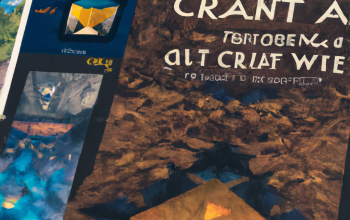Welcome, dear readers, to an immersive journey where the convergence of sight and sound paints a glorious tapestry of emotions. In this article, we embark on an exploration of the remarkable role played by environmental sound and visual elements in the enchanting realm of games. Much like a skilled conductor orchestrating a symphony, developers deftly employ these sensory tools to evoke a myriad of emotions, from heart-pounding excitement to serene tranquility. Be prepared to be dazzled as we delve into the realm of gaming where atmospheric ambiance and artistic design collude to set the perfect mood. So, grab your controllers and prepare to be transported into a masterfully crafted world where sound and visuals intertwine, guiding you on an unforgettable adventure.
Exploring the Power of Ambient Sounds: Enhancing Immersion and Atmosphere in Gameplay
When it comes to creating truly immersive gaming experiences, ambient sounds play a vital role in transporting players to different worlds and enhancing the overall atmosphere. These subtle background noises have the power to captivate our senses, making us feel like we’re right in the midst of the action. From the gentle rustling of leaves in a serene forest to the distant echoes of machinery in a dystopian cityscape, ambient sounds breathe life into virtual landscapes, adding depth and realism to the gaming experience.
By utilizing ambient sounds strategically, game developers can create a multi-sensory experience that immerses players even further into the gameplay. Here are a few ways in which ambient sounds can be harnessed to enhance immersion:
- Setting the scene: From the chirping of birds to the distant sound of crashing waves, ambient sounds can instantly transport players to specific environments, setting the tone for the upcoming gameplay.
- Creatures of the virtual world: The subtle scurrying of creatures in the dark or the bone-chilling growls of menacing monsters can create tension and anticipation, making players feel like they’re not alone in the digital realm.
- Dynamic soundscapes: By dynamically changing the ambient sounds based on the player’s actions or the game’s narrative, developers can create a deeply immersive experience that adapts to the player’s every move.
Strategic Placement of Visual Effects: A Visual Treat for Engaging Gameplay Experience
When it comes to creating an immersive gameplay experience, the strategic placement of visual effects holds the key to captivating players like never before. By seamlessly blending cutting-edge technologies with imaginative design, game developers have the power to transport users to mesmerizing virtual worlds. Whether it’s the flickering flames of a roaring fire, the pulsating glow of neon lights, or the ethereal shimmer of magical spells, visual effects add depth, realism, and an undeniable wow factor to any game.
Striking the perfect balance between visual spectacle and gameplay mechanics, the careful integration of visual effects can enhance overall engagement and keep players coming back for more. A well-placed explosion can intensify the adrenaline rush during a high-stakes combat sequence, while dynamic weather effects can immerse players in a living, breathing game environment. By leveraging the power of visual effects, developers have the opportunity to evoke emotions, create memorable moments, and truly connect players to the virtual worlds they inhabit.
- Enhanced Atmosphere: Each visual effect contributes to the overall atmosphere, setting the tone for the game and enhancing its thematic elements.
- Interactive Feedback: Visual effects can provide valuable feedback to players, signaling critical events, successful actions, or warning signs.
- Gameplay Variety: Tastefully placed visual effects can diversify gameplay experiences, adding excitement, surprise, and an extra layer of challenge.
Crafting Memorable Journeys: The Art of Using Environmental Soundscapes in Games
Welcome to a world where the immersive power of sound creates extraordinary gaming experiences. In this post, we delve into the art of using environmental soundscapes to craft memorable journeys in games. Utilizing the intricate balance between music, ambient noises, and environmental cues, game developers transport players into captivating virtual landscapes that resonate with their senses and imagination.
Imagine wandering through an ancient forest, sunlight streaming through the dense foliage above, as the gentle rustling of leaves and soft chirping of birds create a serene ambiance. Or diving deep into the depths of a mysterious underwater kingdom, where the haunting echo of whale songs reverberates through the vast expanse. The environmental soundscapes in games provide a captivating backdrop and enhance the overall gaming experience, transcending mere audio accompaniment to become an integral part of the narrative. By carefully curating sounds that evoke a gamut of emotions, from calm and tranquility to tension and excitement, game developers harness the power of environmental soundscapes to transport players on extraordinary virtual adventures.
Unlocking Emotional Engagement: Leveraging Interactive Visual Elements for Enhanced Gameplay
In today’s fast-paced world, where technology dominates our daily lives, unlocking emotional engagement has become increasingly important in the realm of video game design. Developers are constantly seeking innovative ways to captivate players and provide them with a truly immersive gaming experience. One of the most effective approaches to achieve this is by leveraging interactive visual elements that not only enhance gameplay but also evoke strong emotional responses.
Imagine embarking on an epic adventure, where every step you take is visually stimulating and emotionally impactful. With the inclusion of interactive visual elements, game developers have the power to transport players to breathtaking landscapes, intricate worlds, and vibrant cities. From awe-inspiring sunsets that make your heart skip a beat to intricately designed character models that stir a sense of connection, these interactive visuals create a deep emotional bond between players and the virtual world they inhabit. The ability to interact with these elements further heightens the emotional engagement, allowing players to feel a sense of agency and influence over their surroundings.
Wrapping Up
As we bid farewell to this immersive exploration into the creative realm of environmental sound and visual elements in games, we are left with a lingering sense of wonder and inspiration. Through this journey, we have glimpsed into the breathtaking landscapes, resonating melodies, and meticulous attention to detail that game designers employ to captivate our senses.
From the haunting echoes of ancient ruins to the melodious whispers of enchanting forests, every environmental sound breathes life into the fictional worlds we traverse. These meticulously crafted auditory experiences transport us to new dimensions, allowing us to vicariously experience triumph, adversity, and everything in between.
Yet, it is not only the sonic tapestry that paints these vivid worlds; it is the careful orchestration of visual elements that completes the masterpiece. From the vibrant hues of a bustling cityscape to the subtle play of shadows in a moonlit night, the visual aesthetics of games create a visual harmony that enriches our gaming experience.
The combination of environmental sound and visual elements in games creates a symphony that transcends conventional entertainment. It illuminates the depths of our imagination, stirs our emotions, and challenges our perceptions. It is through this fusion of senses that games become an art form, inviting us not merely to play, but to immerse ourselves in a realm where creativity knows no bounds.
So, as we emerge from this odyssey through the realm of environmental sound and visual elements in games, let us carry forward a newfound appreciation for the power of these elements to transport, inspire, and captivate. Let us celebrate the game designers who meticulously curate these experiences and the players who embark on these mesmerizing journeys. And above all, let us revel in the knowledge that within the realms of games, artistry and imagination intertwine, setting the mood for countless adventures yet to come.
As video games have become increasingly more state-of-the-art and immersive, developers have become more focused on setting the mood and tone of each scene in a way that is befitting of the story being told. One of the most effective ways to craft an engaging environment for gamers is through creative use of environmental sound and visual elements.
Incorporating environmental sound into video games can set the tone for the virtual world in which the game is set in. This can be done through an array of techniques, such as composer-created musical tracks, sound effects that bring the environment to life and ambient noise that adds texture. For example, a suspenseful scene may benefit from the inclusion of thunder, while the appearance of a tranquil lake may be complemented by the sound of bubbling water or singing birds.
Ambient music has the power to not only set the tone but also explore several emotional cues at once. This type of music is often subtle, with an emphasis on blending with the physical environment to create a smoother overall experience. By offering a more comprehensive auditory experience, developers can further envelop players and help them remain engrossed in their journey.
Not to be overlooked are the visual elements of a game. Mixing textures, lighting, and objects in a scene are all key to evoking the correct emotional appeal. For example, a scene made up of grey tones and sharp lines may imply a dangerous or ominous atmosphere, while a lively and colorful forest may denote a more cheerful and inviting environment. Environment artists must create realistic and aesthetically pleasing environments that capture the player’s attention and draw them further into the game’s world.
By combining sound and visual elements that match the concept of the game, developers are able to offer a unique and inviting experience for gamers. From a game set in a medieval castle to one set in a modern city, appropriate environmental sound and visual elements can take the gaming world to a whole new level while also engaging players in the game’s narrative. Through creative and thoughtful implementation, developers are able to craft immersive and unique worlds for their audience.



